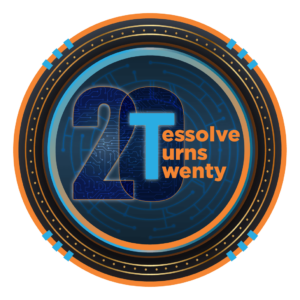In the rapidly evolving domain of technology, computing stands as the cornerstone of innovation, with semiconductors constituting the focal point of this revolution. From powering handheld devices to facilitating sophisticated artificial intelligence (AI) systems, semiconductors serve as the essential foundational elements driving contemporary computing. As we progress further into the 21st century, advancements in semiconductor technology are primed to redefine the trajectory of computing, unleashing novel prospects and extending the frontiers of attainable progress. This article intends to delve into the prospective evolution of computing, with a focus on the progression of semiconductor technology.
The Evolution of Semiconductors
Semiconductors have indeed come a long way from where they started. From simple devices applied in merely simple electronic components, with the advancement of technology, they grew complex with their capabilities. Today, semiconductors are at the heart of practically every electronic gadget, from consumer electronics to industrial machinery.
Another huge step in semiconductor technology was the invention of the Integrated Circuit (IC) in the 1950s. The realization of this structure allowed the miniaturization of electronic components on smaller and more powerful devices. From then on, semiconductors continued to evolve in materials, design, and manufacturing.
Get in touch
Moore’s Law and Beyond
In effect, Moore’s Law has, for many decades, represented the driving force of semiconductor improvements by supposing a two-yearly doubling of the number of transistors on each chip. With such enormous growth in transistor density, rapid development has been possible with respect to more powerful yet efficient computers. As this technology approaches its physical limit with traditional silicon semiconductors, the industry faces new hurdles in maintaining innovation at this pace.
Almost every top semiconductor company is investing parallelly to find alternative materials and methods that can help solve this demand for smaller, faster, and energy-efficient chips. For instance, SiC (silicon carbide) and GaN (gallium nitride) have emerged as promising materials that outperform conventional silicon in performing specific tasks, especially in the fields of power electronics and high-frequency devices.
Artificial Intelligence and Machine Learning
AI and ML technologies have brought challenges and opportunities for the semiconductor industry. Since these technologies require immense computational power, they have driven the need for unique semiconductor designs. AI and ML workloads are mostly parallel, while traditional CPU architectures are poorly suited for these tasks. This has driven the sudden growth in the development of chips for AI, including graphics processing units (GPUs), tensor processing units (TPUs), and neuromorphic chips.
Several semiconductor design companies are leading this revolution of creating customized chips oriented to AI and ML applications. The chips are specifically designed to handle the massive data processing requirements associated with AI algorithms while keeping power consumption at a minimum. This trend is expected to continue with increased demand for AI-specific semiconductor design services in the coming years.
Quantum Computing
Quantum computing is yet another frontier that holds immense promise for the future in computing. While classical computers represent data by bits, either 0 or 1, quantum computers are based on qubits, which can represent 0 and 1 simultaneously. This superposition property allows quantum computers to execute complex calculations at speeds that no classical computer of today could dream of.
Although quantum computing is still in its infancy, every top semiconductor company is investing extensively in research and development to make it a reality. It can potentially revolutionize several industries that now rely on solving intractable problems with classical computers, such as cryptography, drug discovery, and material science.
The Emergence of 3D Chip Stacking
This idea of 3D chip stacking represents some of the most attractive advances within semiconductor technology. Conventionally, chips were designed in a planar, or two-dimensional, configuration, with various transistors sitting next to one another on the same plane. Three-dimensional chip stacking provides, for what has been a very arduous period considering the physical limitations of two-dimensional scaling, a new dimension by which the performance and density of chips can be improved without necessarily relying on reductions in transistor size.
In 3-D chip-stacking technology, several transistor layers are stacked on one another for added computing power while reducing further footprint area. It gives higher performance and low power dissipation with reduced heat generation. Many semiconductor design companies are looking at 3D chip stacking as the path beyond traditional barriers of scaling into new performance dimensions.
How Tessolve Accelerates Semiconductor Innovation
With its continuous drive to innovate, Tessolve has grown into the world’s leading semiconductor design and testing company, playing a critical role in shaping the future of computing. Backed by expertise across design, verification, and validation, Tessolve supports companies in faster time-to-market and higher reliability with innovative semiconductor products. Its semiconductor design services help companies in chip design, hardware-software co-design, and integration of systems for developing cutting-edge solutions that match their specific needs.
Apart from design, Tessolve also stands among the top end-to-end providers in semiconductor testing to ensure quality and performance for a variety of chips. Its broad testing spans AI-specific chips, high-performance computing devices, and next-generation 3D chip stacking. By partnering with Tessolve, businesses can leverage their end-to-end solutions to accelerate product development and maintain a competitive edge in the rapidly evolving semiconductor landscape, making them a top semiconductor company with which to collaborate.
Also Read: The Role Of Semiconductors In IoT And Smart Devices
Let’s Sum Up
Bright days are ahead in computing, and all this will be possible because of the advancement of semiconductor technologies. From chips made specifically for AI to quantum computing to 3D stacking of chips, possibilities could be endless. Top semiconductor companies are at the heart of leading this revolution through continuous innovation. Meanwhile, every semiconductor design company as well as semiconductor testing company plays a very important role in making them work accordingly.
Looking ahead, collaboration and innovation represent two leading imperatives that will determine the semiconductor industry’s future shape. Only through collaboration can the industry continue to enable the future of computing, enabling new applications and changing how people live and work. The speed of change is continuously increasing without any indication of deceleration, the logical next step for companies committed to trying to stay ahead is partnering with the best semiconductor company to employ its semiconductor design services.



